In Alaska, yellow birds are a familiar sight during the spring and summer when warblers make their arrival. However, during the winter months, these yellow birds are not commonly seen.
To aid in identifying the yellow birds you spot in Alaska, this guide provides pictures, identification information, song recordings, and migration patterns.
The majority of yellow birds in Alaska are warblers, orioles, or tanagers, and sometimes the females of these species appear distinctively different from the males.
With the comprehensive information provided in this guide, identifying yellow birds will become much easier. The list of yellow birds in Alaska is arranged based on their frequency of sightings in spring and summer (May and June) according to ebird checklists.
During the summer in Alaska, you may encounter the following yellow birds: Yellow-rumped Warbler, Orange-crowned Warbler, Wilson’s Warbler, Yellow Warbler, Eastern Yellow Wagtail, Common Yellowthroat, Cedar Waxwing, American Redstart, and Western Tanager.
Occasionally, there may be accidental sightings of yellow birds in Alaska, including Palm Warbler, Evening Grosbeak, Western Kingbird, Western Meadowlark, Magnolia Warbler, Nashville Warbler, Cape May Warbler, Yellow-headed Blackbird, Hooded Oriole, Tropical Kingbird, American Goldfinch, Dickcissel, Prairie Warbler, Black-throated Green Warbler, Scarlet Tanager, Canada Warbler, Orchard Oriole, and Yellow-throated Warbler.
So, continue reading to successfully identify those yellow birds you have spotted.
Alaska is home to 27 yellow bird species:
1. Yellow-rumped Warbler
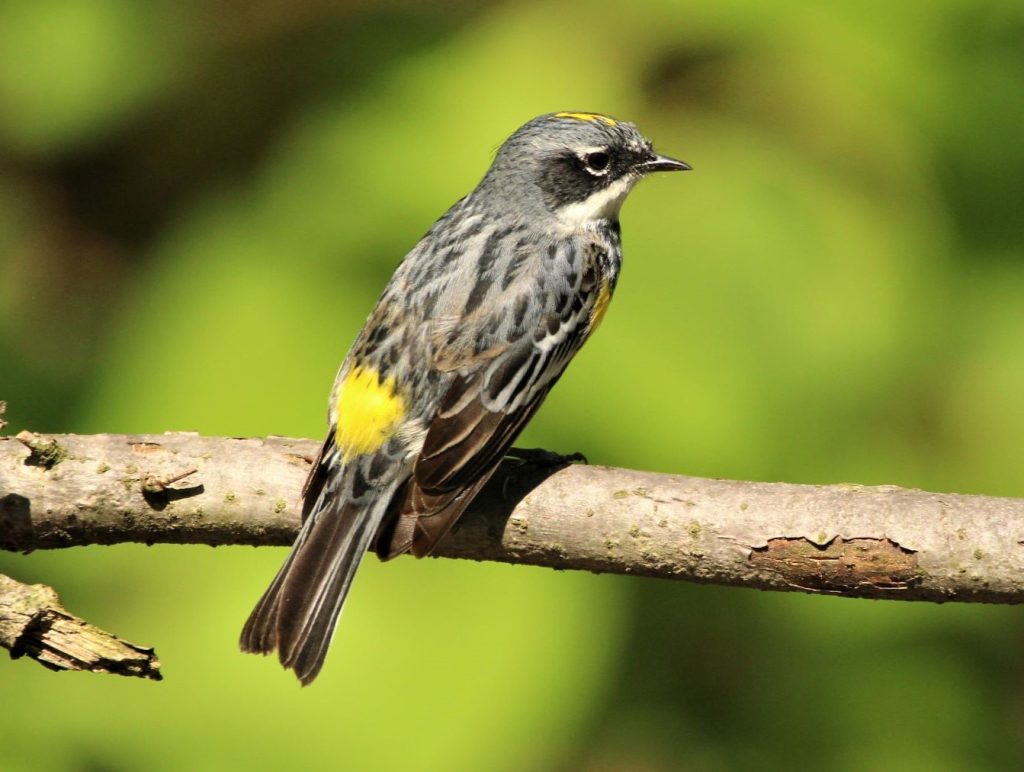
These warblers can be found in Alaska from April to November. They have a gray appearance with flashes of yellow on their face, sides, and rump, along with white wings. Female Yellow-rumped Warblers may have a slight brownish coloration, while winter birds exhibit paler brown shades with bright yellow rumps and sides that transition back to yellow and gray in spring. They are commonly recorded in 21% of summer checklists submitted by birdwatchers in the state.
Yellow-rumped Warblers breed primarily in Canada and parts of the Rockies and the Appalachian mountains. They migrate to the Midwest before overwintering in southern and southwestern US states, the Pacific Coast, Mexico, and Central America. These warblers can be found in coniferous forests during the breeding season and open areas with fruiting shrubs during winter. Their diet consists mostly of insects in summer and fruit, including bayberry and wax myrtle, in winter.
2. Orange-crowned Warbler
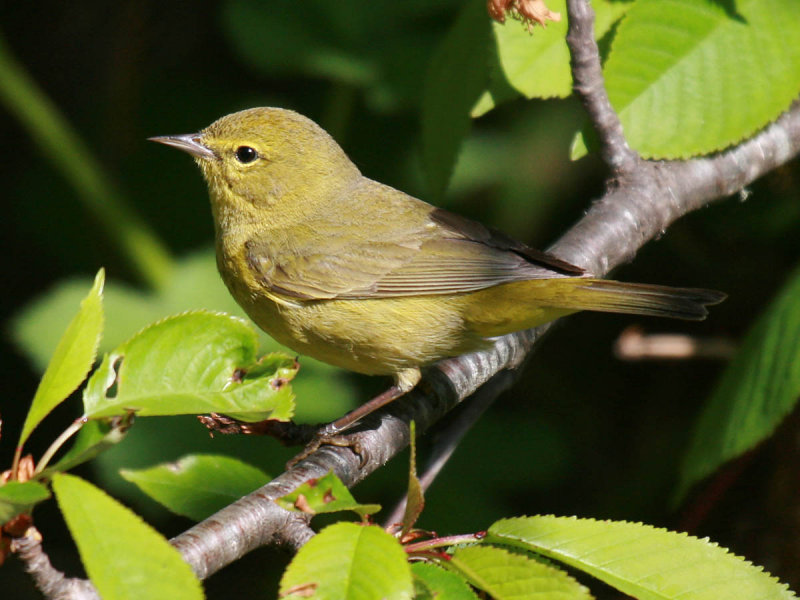
Orange-crowned Warblers are typically spotted in Alaska from April to September, with some individuals remaining until December. They are recorded in 19% of summer checklists in the state. These warblers have a yellow-olive coloring, which is more yellow on the Pacific Coast. Their orange crown is rarely visible.
Breeding in Canada and western US states, Orange-crowned Warblers migrate to the Pacific, East and Gulf Coasts, and Mexico. They can also be seen during migration in most US states, except the northeastern region. These warblers inhabit shrubs and low vegetation, with a preference for open woodlands during the breeding season. Their diet primarily consists of spiders and insects such as caterpillars and flies, but they also consume fruit, berries, and seeds. Orange-crowned Warblers may visit backyard feeders.
3. Wilson’s Warbler
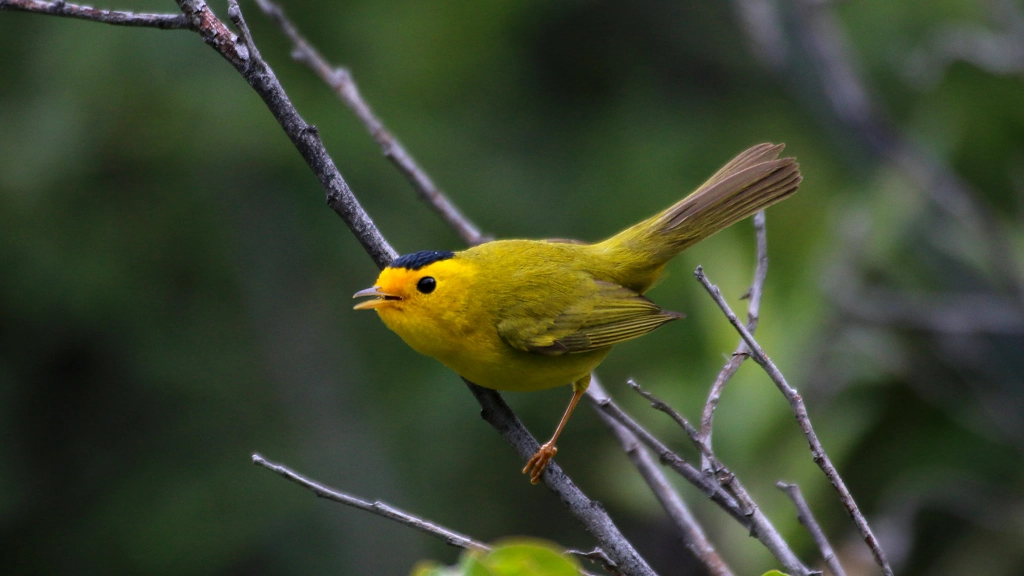
Wilson’s Warblers are present in Alaska from May to November, breeding in the state and occurring in 12% of checklists during this period. These tiny round yellow warblers have a large black cap in males and a smaller black cap in females.
Breeding in Canada, Alaska, and northwestern US states, Wilson’s Warblers can be observed across all US states during migration. They spend their winters in Mexico and Central America. These warblers can be found along streams in thickets and near forest edges, foraging for insects, larvae, and spiders.
4. Yellow Warbler
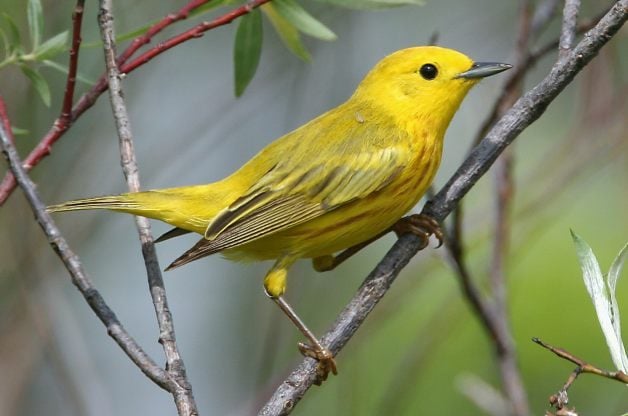
Yellow Warblers are seen in Alaska during the breeding season starting in May, with migration beginning in November. They are recorded in up to 11% of summer checklists. These small, bright yellow birds have yellow-green backs, and males display chestnut streaks on their breast. Females and juveniles are less vibrant in color compared to males.
Yellow Warblers undertake a long-distance migration, breeding in Canada and the US (except for southeastern states) and wintering in Central and South America. They can be observed during migration in southeastern US states. These warblers inhabit streamside areas and wetlands, often found in thickets and field edges while foraging for insects like caterpillars, midges, beetles, bugs, and wasps.
5. Eastern Yellow Wagtail

Eastern Yellow Wagtails are primarily spotted in northern Alaska during the breeding season, which occurs from May to September. They are present in 2% of summer checklists.
Males of this species exhibit a bright yellow underside and yellowish-green back, along with the characteristic bobbing motion of their tails. Eastern Yellow Wagtails are usually found in Asia, but they also breed in western Alaska. They can be observed in scrubby tundra and marshes, where they hunt for insects.
6. Common Yellowthroat

Common Yellowthroats are not very common in Alaska, but they can be seen during the breeding season from May to mid-November in the southeast region of the state. These small songbirds have a brownish back and bright yellow undersides, with long tails. Males possess black masks across their faces, while the brightness of yellow may vary geographically, and some individuals may appear more olive-toned underneath.
Breeding over most of North America (except Alaska and northern Canada), Common Yellowthroats are partially resident along the Gulf Coast and Pacific Southwest, while others migrate south for the winter. They can be found in marshy or wetland areas and brushy fields, thriving in thick, tangled vegetation.
7. Cedar Waxwing
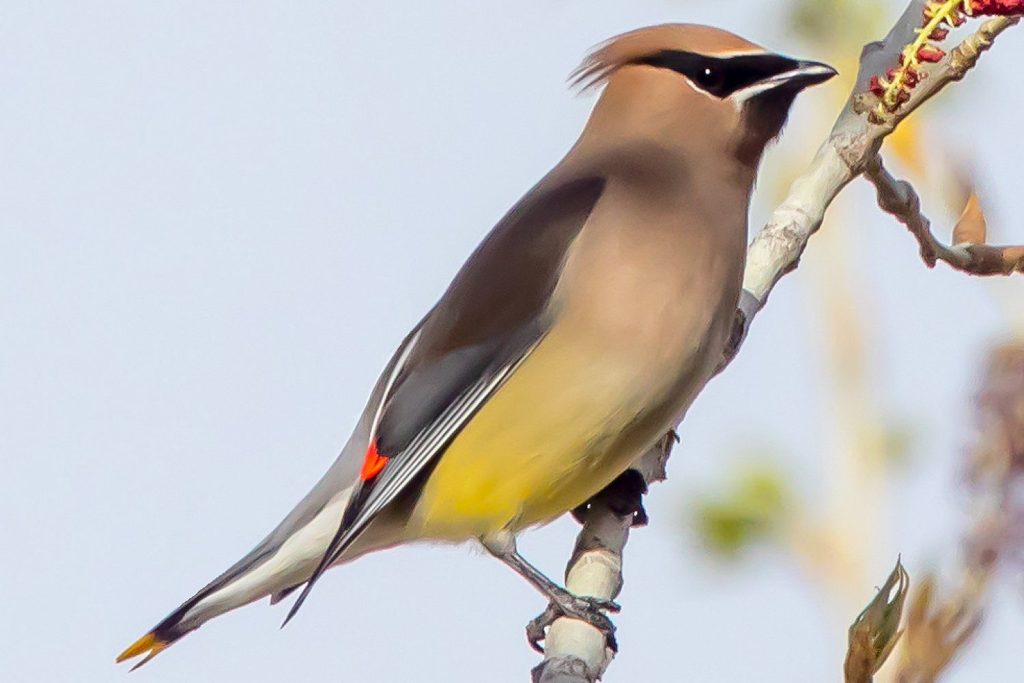
Although not commonly seen, Cedar Waxwings can be spotted in Alaska during the summer, typically from mid-June to November in the southeast region of the state. These elegant social birds feature pale brown heads, chests, and crests that fade to gray on their backs and wings, with pale yellow bellies. They have a narrow black mask over their eyes and bright red wingtips.
Cedar Waxwings breed in Canada before migrating to the southern US, Mexico, and Central America for winter. They are residents year-round in northern US states. These birds can be found in berry bushes, woodlands, grasslands, towns, and along streams. They primarily feed on fruit, with insects becoming part of their diet during the summer.
8. American Redstart
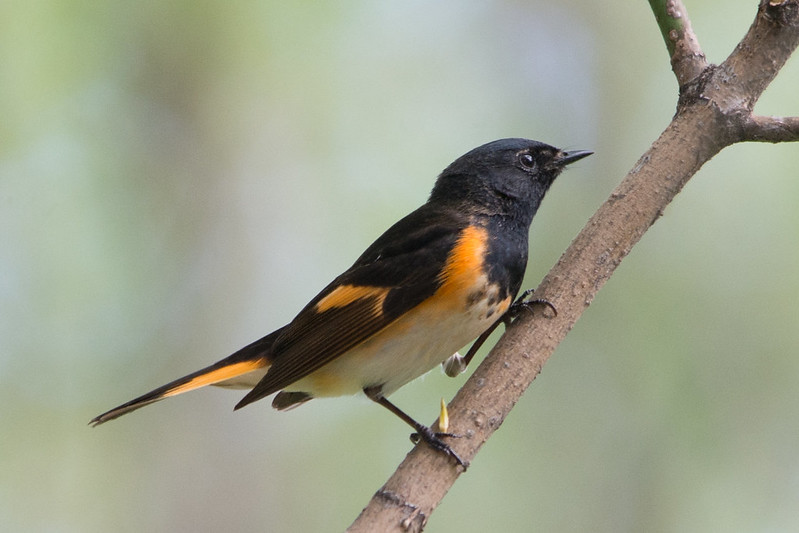
American Redstarts are not commonly seen in Alaska but do breed in the southeast region of the state. They can be spotted from mid-May to September.
Male American Redstarts have mostly black plumage with bright orange patches and a white belly. Females, on the other hand, are olive-gray rather than black, with numerous yellow patches.
Breeding in eastern US states, Canada, and northwestern US states, American Redstarts are also observed during migration in central and western US states. They spend their winters in Mexico and Central America. These warblers can be found in deciduous woodlands, foraging for insects. They may also visit backyards and thickets to consume berries like serviceberry and magnolia.
9. Western Tanager
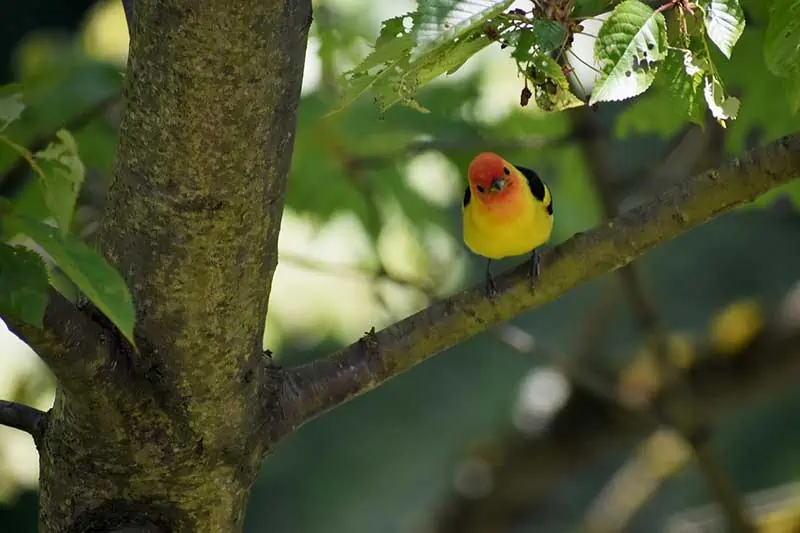
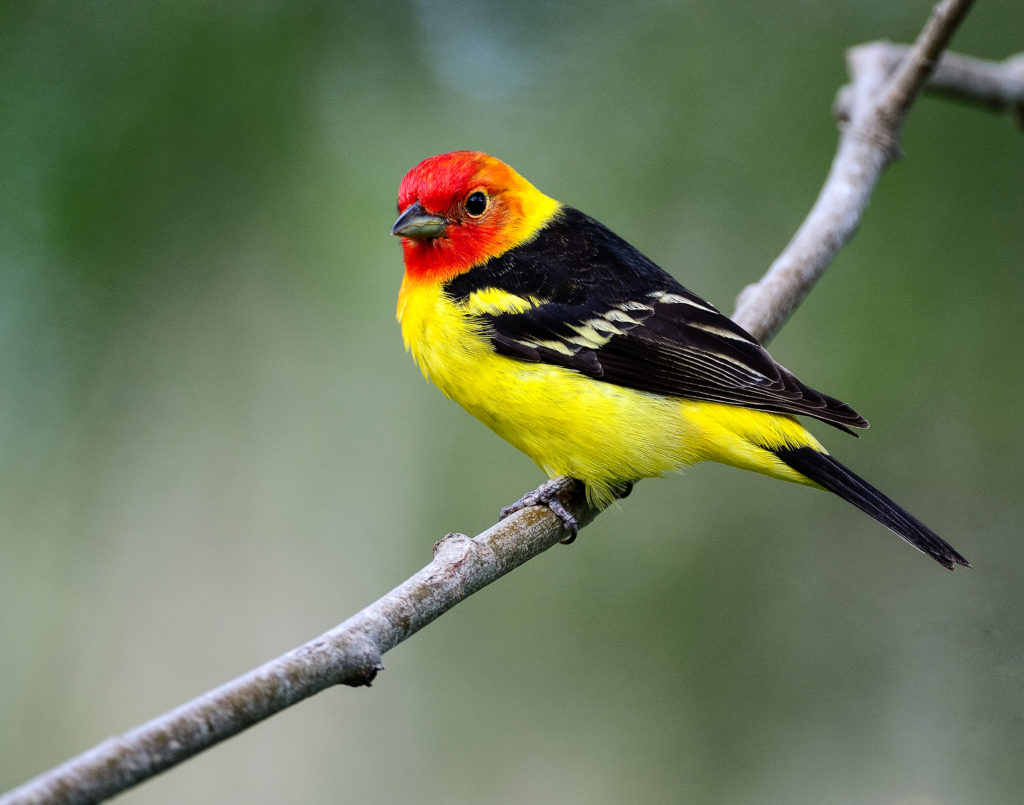
Western Tanagers are not frequently seen in Alaska but have been occasionally spotted in the southeast region during the summer.
Male Western Tanagers boast a flaming orange-red head, yellow body, and black wings. Females, on the other hand, possess only red faces, with their bodies displaying a yellow-green coloration.
These tanagers breed in western US states and western Canada, while they can be observed during migration in the east and south of their range. During winter, they reside in Mexico and Central America. Western Tanagers prefer open conifer forests, often hiding in the canopy despite their vibrant plumage. Interestingly, their population has increased over the past four decades. They primarily feed on insects during summer, including wasps and grasshoppers, while incorporating fruit into their diet during fall and winter.
10. Palm Warbler
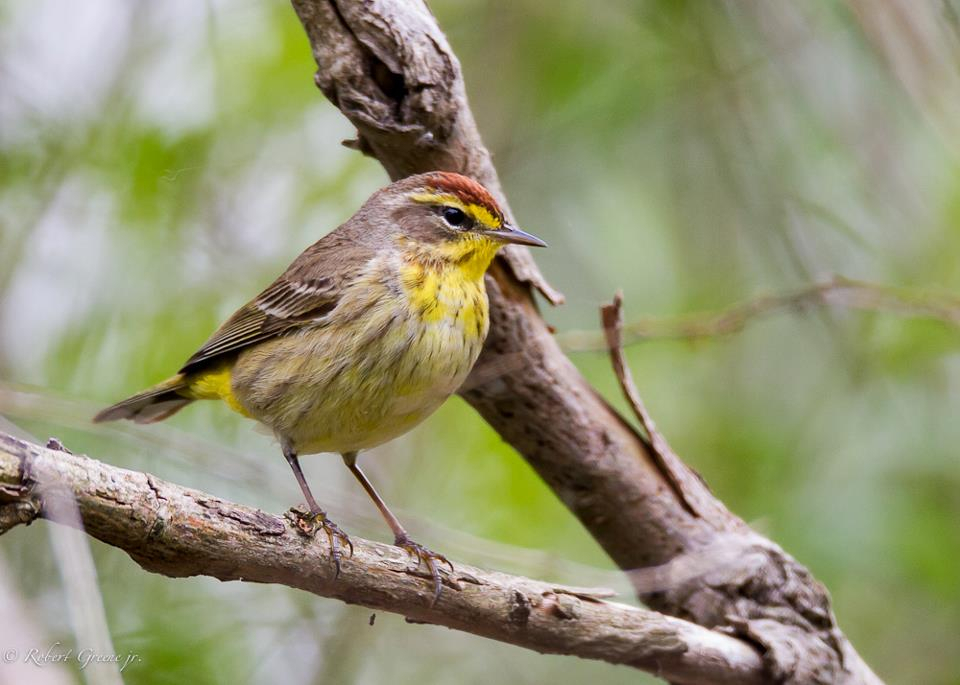
Considered rare or accidental species in Alaska, Palm Warblers have been spotted during migrations. These warblers have a rusty red patch on the top of their head and are predominantly brownish-olive in color. They breed in Canada but can be found in eastern US states during migration, as well as year-round along the far south coast and Florida.
Palm Warblers are usually observed during the spring and fall migration in weedy fields, forest edges, and scrubby areas. They are often seen foraging along the ground for insects, sometimes mixed with other birds like sparrows, juncos, and Yellow-rumped Warblers.
11. Evening Grosbeak
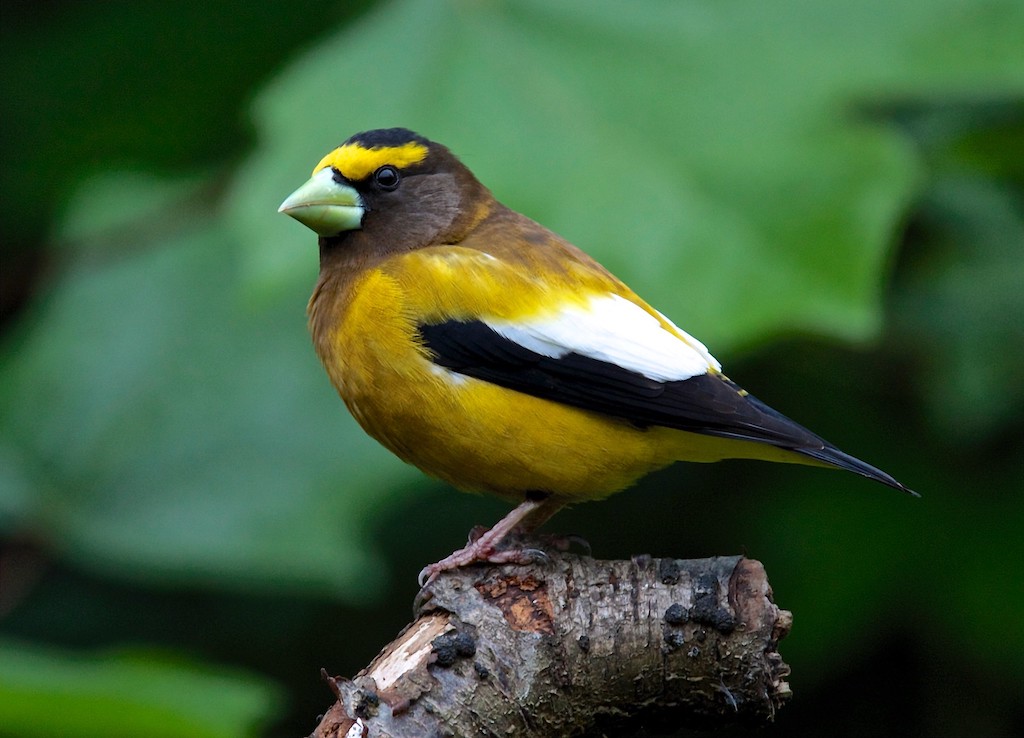
Evening Grosbeaks are considered accidental sightings in Alaska. These birds have been observed during migrations. They have a stocky build with a large beak. The males exhibit bright yellow plumage on their head, back, and underparts, contrasting with black wings featuring white patches. Females have a more subdued appearance with grayish-brown and yellow tones.
12. Western Kingbird
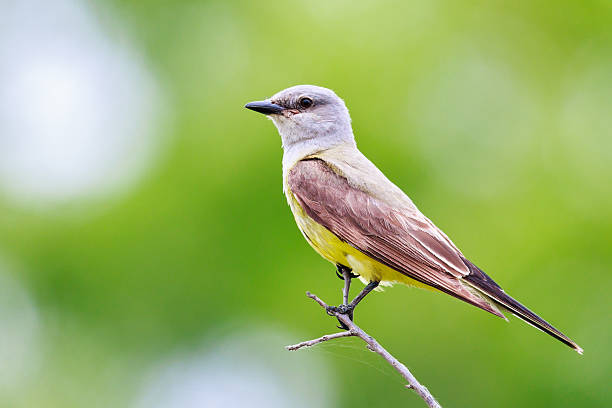
Western Kingbirds are accidental visitors to Alaska. They can be spotted during their migrations. These kingbirds have a sleek and slender body with a grayish-brown back, yellow underparts, and a white throat. They also feature a distinct white outer tail with black edges.
13. Western Meadowlark
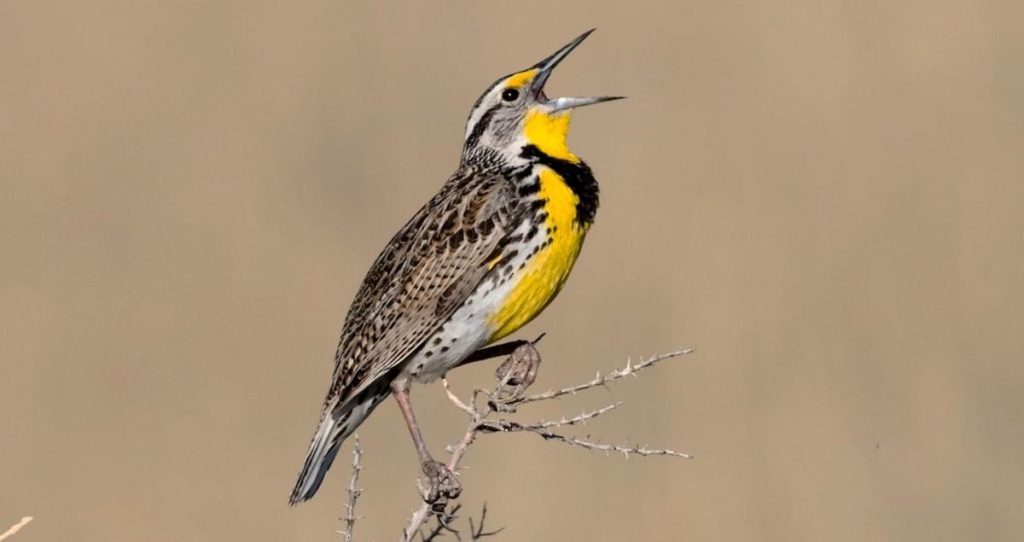
Western Meadowlarks are occasionally seen in Alaska. They breed in other regions and can be observed during their migrations. These birds have a stout build with a vibrant yellow underbelly, a black V-shaped pattern on their chest, and brownish upperparts. They are known for their beautiful and melodic song.
14. Magnolia Warbler

Magnolia Warblers are rare sightings in Alaska, usually encountered during their migrations. These warblers have a black and white striped pattern on their backs and a bright yellow underside. They also exhibit a bold black necklace-like pattern across their chest.
15. Nashville Warbler

Nashville Warblers are infrequent visitors to Alaska, often seen during migrations. These small warblers have olive-green upperparts, a bright yellow underside, and a distinct white eye-ring. They also possess a grayish head with a yellow crown.
16. Cape May Warbler
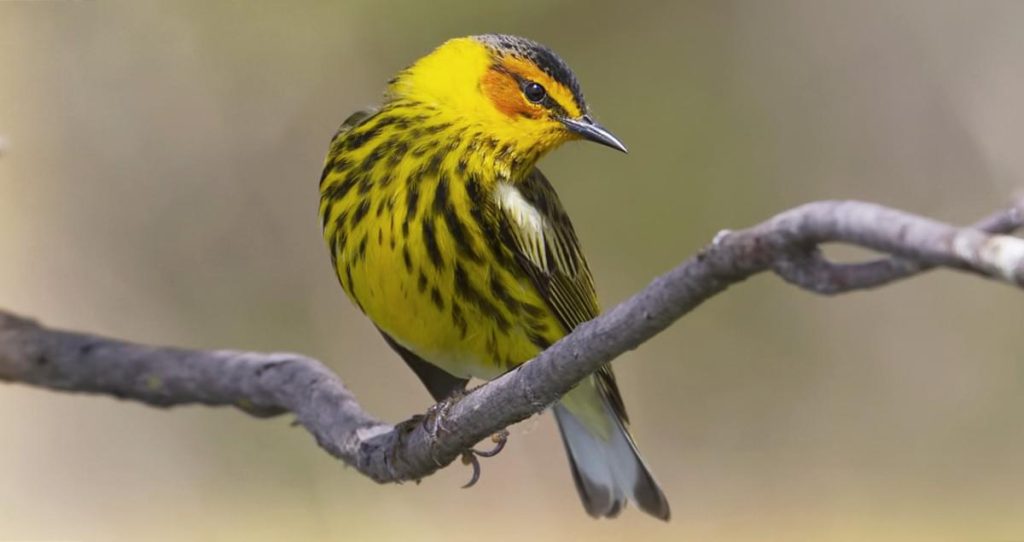
Cape May Warblers are considered accidental species in Alaska. They can be encountered during migrations. These warblers have olive-green upperparts, a yellow underside, and a distinctive rusty-colored patch on their cheeks. Males also display chestnut streaks on their breast.
17. Yellow-headed Blackbird

Yellow-headed Blackbirds are accidental visitors to Alaska. They may be spotted during migrations. These blackbirds are characterized by their striking yellow heads and black bodies. Males also possess white wing patches.
18. Hooded Oriole

Hooded Orioles are accidental sightings in Alaska, primarily observed during migrations. These orioles have a vibrant yellow body with a black hood and face mask. They also exhibit long, slender beaks and pointed wings.
19. Tropical Kingbird

Tropical Kingbirds are occasional visitors to Alaska during migrations. They have a similar appearance to Western Kingbirds, with a grayish-brown back, yellow underparts, and a white throat. These kingbirds can be identified by their distinctive loud and sharp calls.
20. American Goldfinch
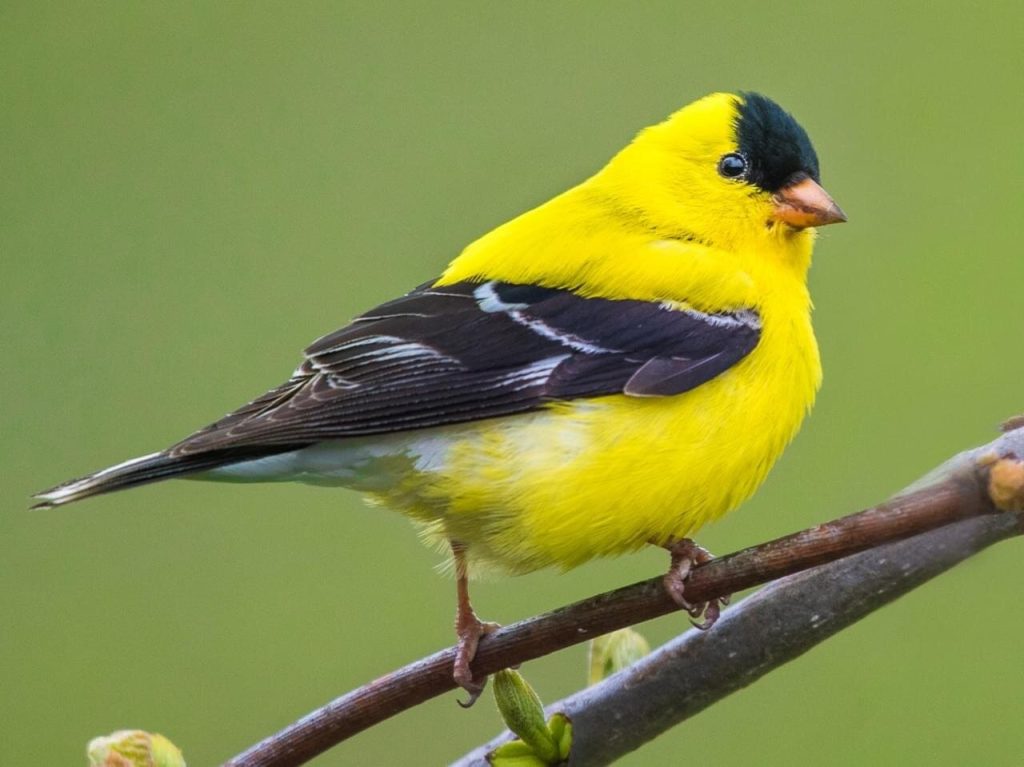
American Goldfinches are rare sightings in Alaska, occasionally spotted during migrations. These small finches have bright yellow plumage, with males displaying black caps on their heads during the breeding season. In winter, their colors become more muted.
21. Dickcissel
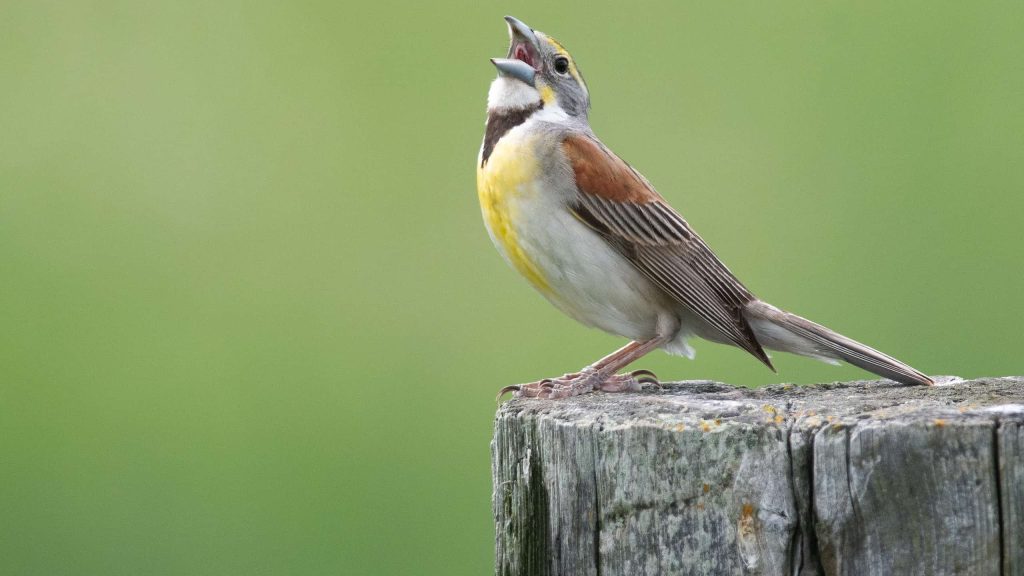
Dickcissels are accidental visitors to Alaska, rarely seen during migrations. They resemble small sparrows, with brownish-yellow plumage and streaks on their back and sides. Males have a distinct black bib on their throats.
22. Prairie Warbler
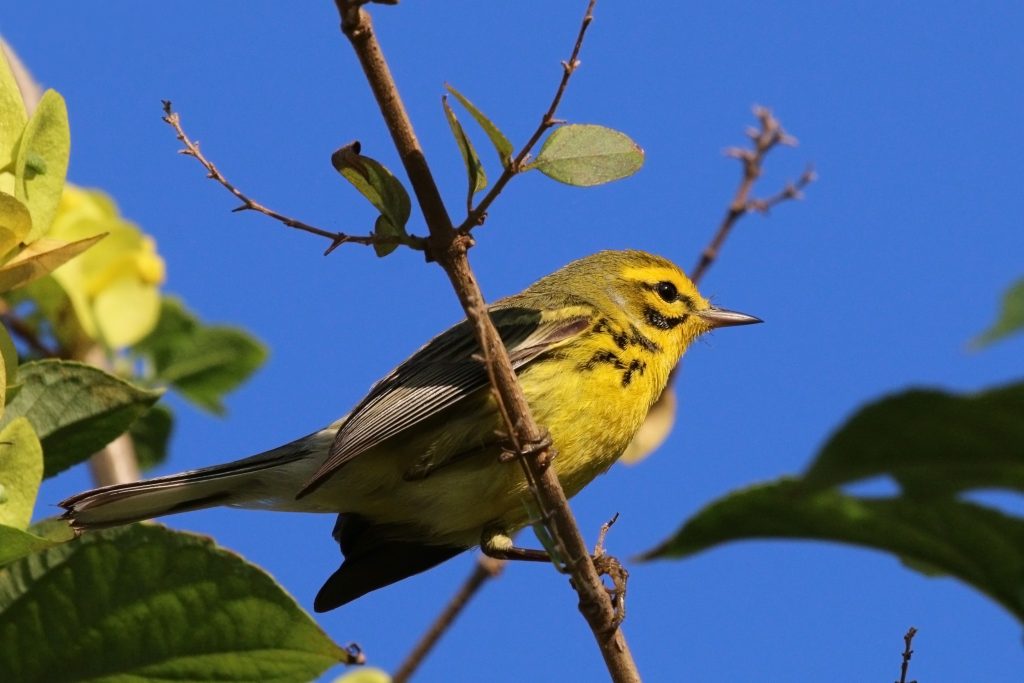
Prairie Warblers are considered accidental species in Alaska, occasionally encountered during migrations. These warblers have bright yellow underparts, olive-green upperparts, and a black-streaked pattern on their sides. Males also possess bold black markings around their eyes.
23. Black-throated Green Warbler

Black-throated Green Warblers are infrequent visitors to Alaska, typically seen during migrations. These warblers have yellow underparts, olive-green upperparts, and a black throat and face. They also exhibit white wing bars.
24. Scarlet Tanager

Scarlet Tanagers are rare sightings in Alaska, occasionally observed during migrations. These striking birds have bright red plumage in the case of males and a more subdued yellowish-green coloration in females.
25. Canada Warbler
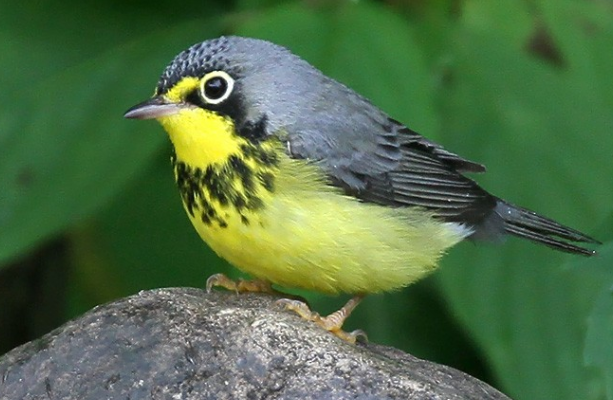
Canada Warblers are accidental visitors to Alaska, sometimes spotted during migrations. They have a gray upper body, yellow underparts, and a distinct necklace-like pattern of black streaks on their breast. Males also exhibit a black necklace and a yellow throat.
26. Orchard Oriole
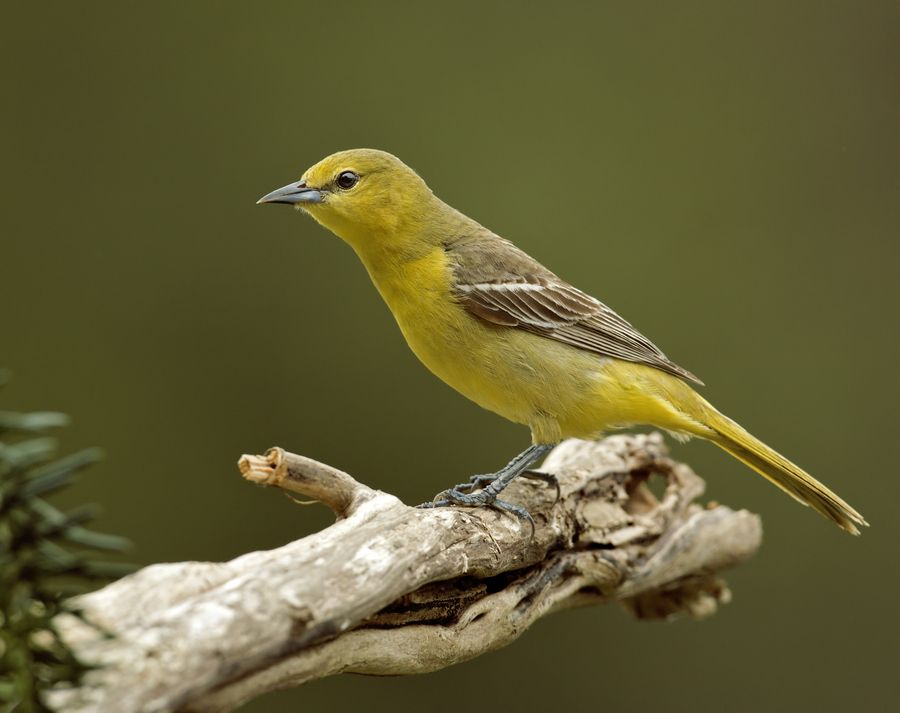
Orchard Orioles are considered accidental species in Alaska, occasionally encountered during migrations. The males have a vibrant orange plumage on their underparts, with black heads and backs. Females have a more subdued appearance with yellowish underparts and olive-green upperparts.
27. Yellow-throated Warbler
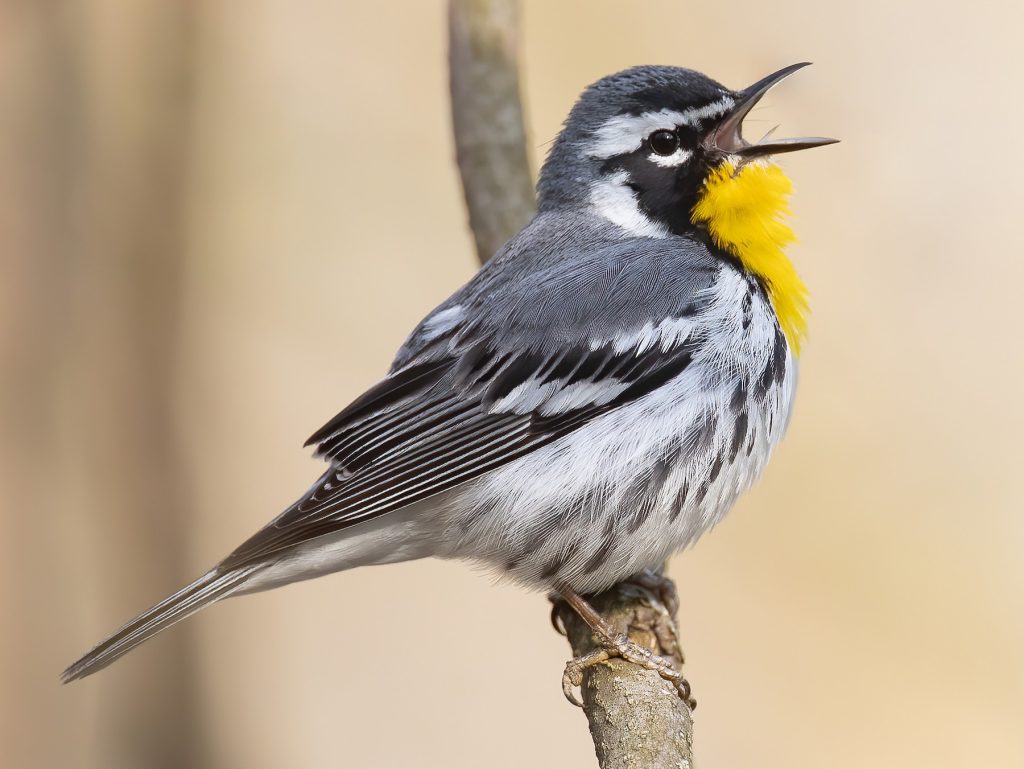
Yellow-throated Warblers are rare sightings in Alaska, occasionally seen during migrations. These warblers have a yellow throat and upper breast, contrasting with white underparts and grayish-brown upperparts. They also possess black streaks on their sides and a black eye line.
By familiarizing yourself with these 27 yellow bird species, you’ll have a better chance of identifying the ones you spot in Alaska. Enjoy the excitement of birdwatching and the beauty of these vibrant creatures!